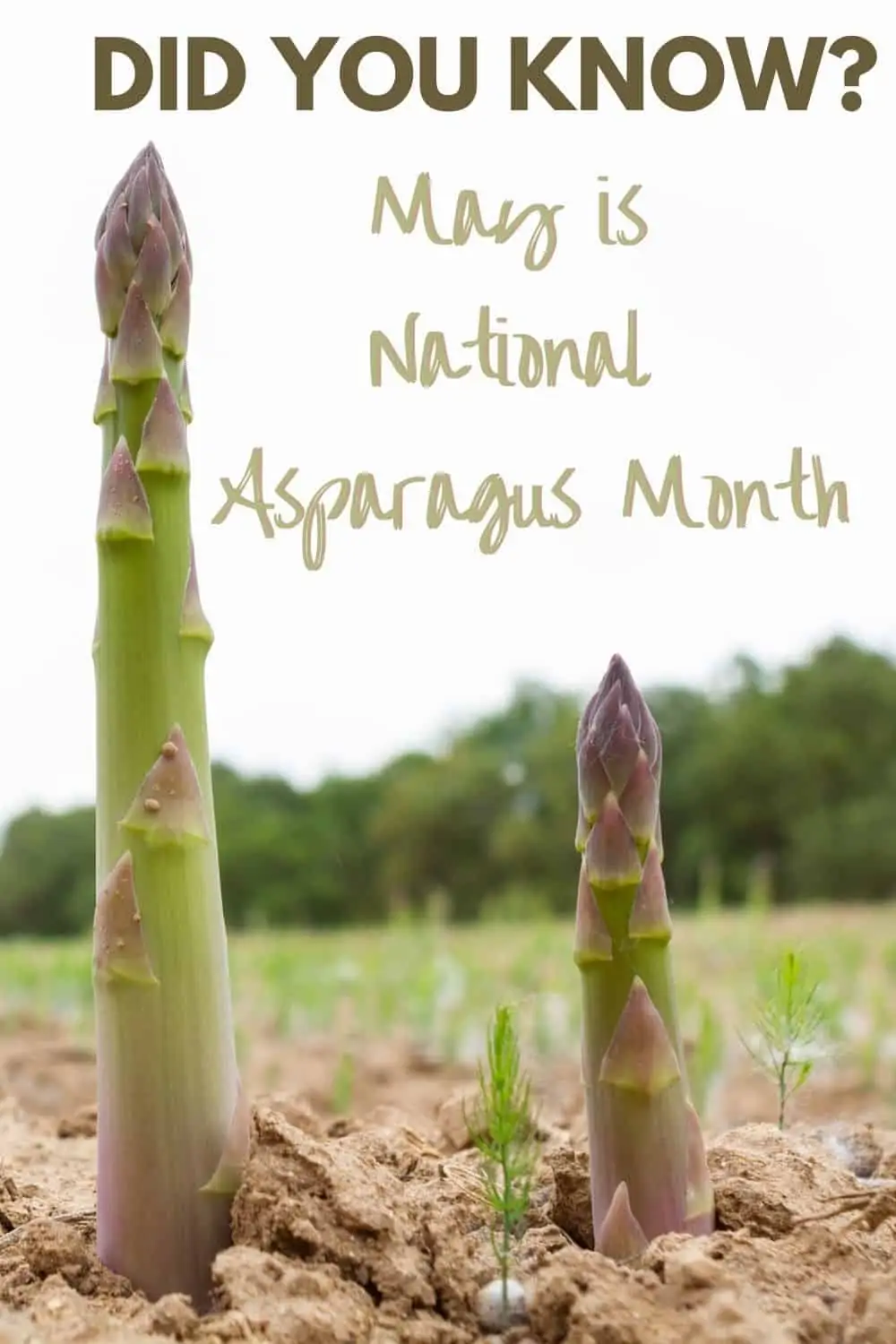One of the first spring vegetables to poke through the soil, asparagus is worthy of celebration after a winter of frozen, canned, and imported produce. The appearance of fresh, local asparagus at newly reopened farmers markets and roadside stands alerts us to the presence of spring just as surely as blooming daffodils and budding trees. In much of the U.S., asparagus season comes into full swing around May, making it a fitting month to dedicate to the unique and delicious vegetable.
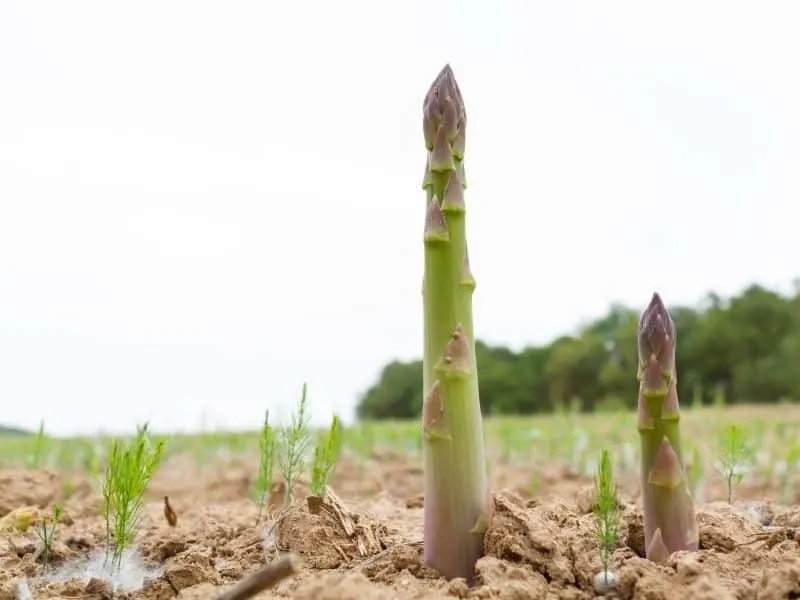
History of National Asparagus Month
A native of Eurasia, asparagus has been used by humans since as early as 3000 or 4000 BC. European settlers began growing it in North America in the mid-to-late 1600s. Although ancient Greeks and Romans used the vegetable as an offering, the first asparagus festival didn’t occur in the U.S. until 1973, in Hart, Michigan. In 1985, asparagus had a whole month dedicated to it, leading to the celebration of National Asparagus Month every May.
How to celebrate National Asparagus Month
Of course, the easiest and perhaps the best way to celebrate National Asparagus Month is by eating asparagus! This versatile vegetable can be steamed, grilled, sautéed, roasted, boiled, or even eaten raw (here are 7 ways to cook asparagus). The fresher, the better, so look for local asparagus at farmers’ markets, farm stands, or grocery stores that often carry local produce.
Although limp asparagus is still very much edible and can be used mixed into recipes (think asparagus soup, frittatas, and stir-fries), to best enjoy the vegetable on its own, choose crisp, firm spears with compact tips and little to no odor.
Get kids involved by visiting a farm that grows asparagus. Search for a local U-pick farm for a hands-on experience or one that offers farm tours – many places also have small petting zoos and other fun activities.
Take the celebration a step further by growing asparagus in your own garden! A perennial, asparagus only needs to be planted once for more than a decade of harvests.
5 tips for growing asparagus
1. Select a location and prepare the soil
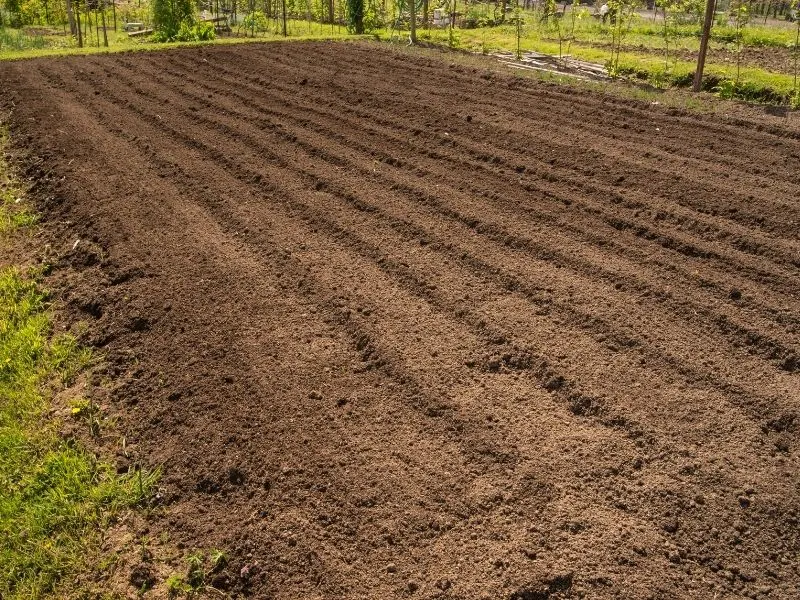
Asparagus grows best in full sun and sandy soil with excellent drainage and a neutral pH. Plant on a hillside if you have denser soil, and mix in some lime if it’s too acidic. Adding a bit of compost will also benefit the young plants.
2. Choose a variety
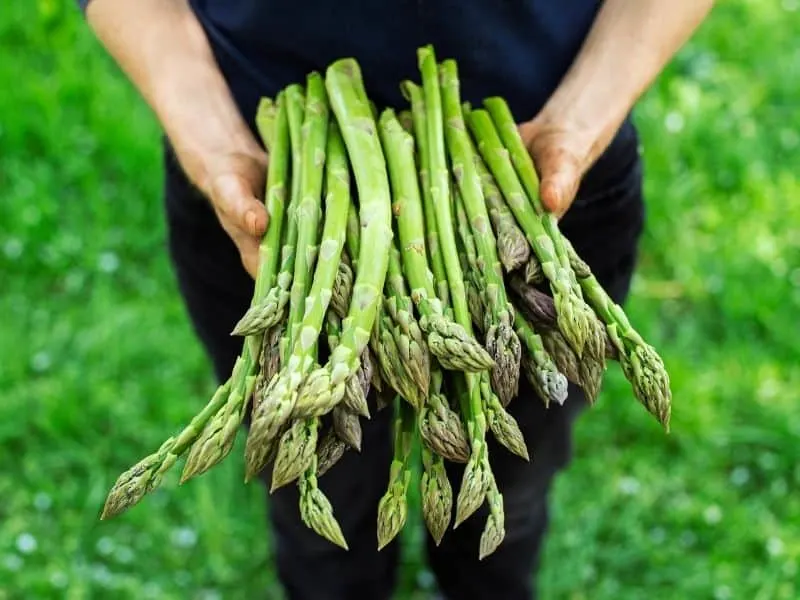
Asparagus plants are dioecious, meaning there are male and female plants. Both produce spears, though male plants tend to produce more and live longer. Consider also your climate, and look for cultivars that suit your growing zone. Popular varieties include the open-pollinated Washington asparagus and hybrids Millennium and Jersey.
3. Transplant crowns
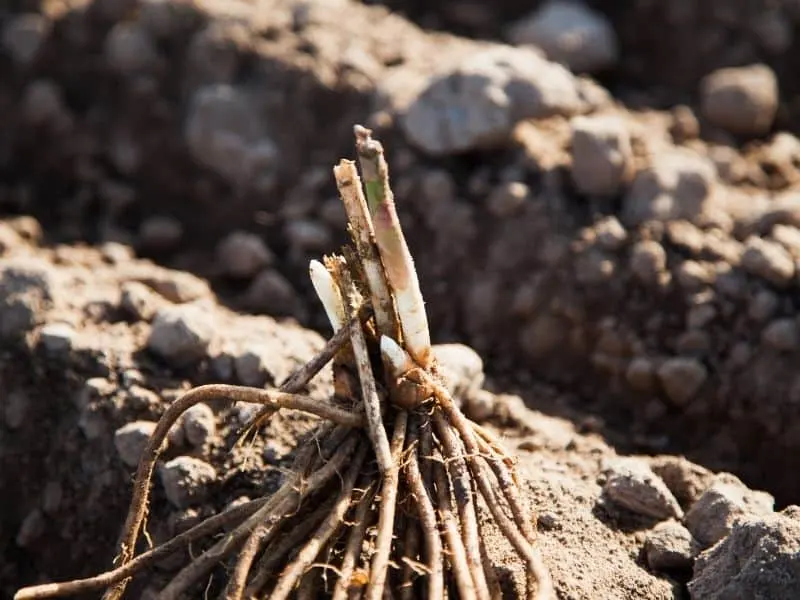
Purchase year-old crowns from a nursery, and plant them about a foot apart in a trench six to 12 inches deep; shallower for clay soils and deeper for sand. Multiple trenches should be spaced at least three feet apart. When planting, cover the crowns with only two to three inches of soil. Once spears emerge and become sturdy and several inches high – about six weeks after planting – gently fill in another three inches of soil.
4. Harvest asparagus spears
This step really should go at the end, because you don’t want to harvest any asparagus the first year! Wait until the third year to pick spears, and then only for about two weeks, waiting for the spears to reach eight to 10 inches high before cutting or snapping them off just above the soil surface. In the second year of harvesting (four years since planting), you can increase to four weeks of picking, then a full season of six to seven weeks the third year.
5. Care for the asparagus “fern”
Water young plants regularly throughout the growing season, until around August or September, and always keep weeds to a minimum, especially during the first couple of years, when competition can slow growth. A good layer of mulch will help with moisture retention and weed suppression. In the fall, after frost has killed the “ferns,” or foliage, cut it back to about an inch above the ground.
Learn more about asparagus
How to control asparagus beetles
No matter how you choose to show appreciation for this wonderful, unique vegetable, I hope you have a very happy National Asparagus Month!
